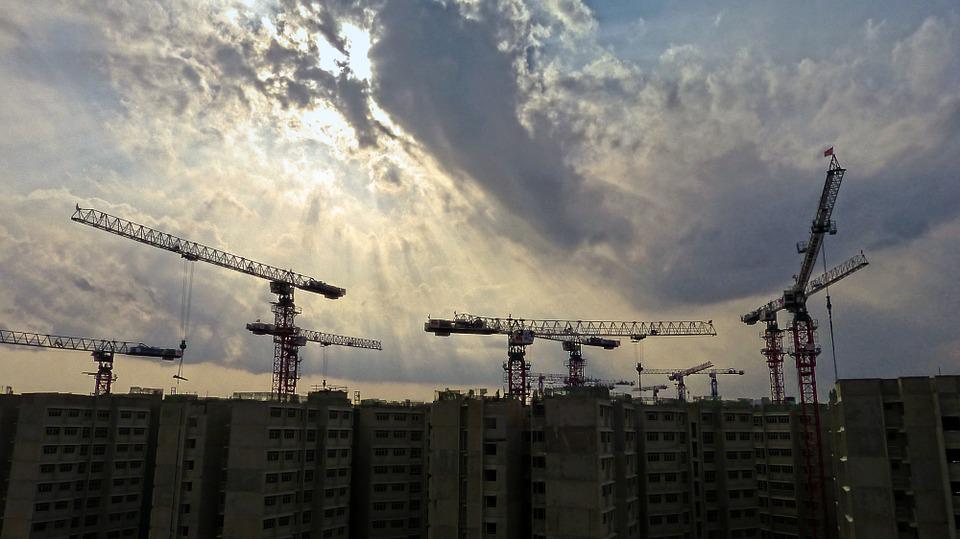
Which is a Smart Pick–Buying Under Construction or Ready to Move Property?
Pune real estate market will spoil you for choice when it comes to home buying. There is no dearth of flats in Pune whether under construction or ready possession. While deciding which type to pick is no easy task; what will further add to the dilemma are the multiple advantages and disadvantages that are inherently linked to under-construction homes and ready-to-move-in units. Since both these property types serve and suit different purposes and intents, it is imperative to know their pros and cons in detail.
Here is a ready reckoner to guide you through.
1. Under-Construction Property
Advantages:
Higher Returns
It usually yields a higher return on investment due to an extended window period between the buying stage and delivery timeline. If you sell the property closer to possession, you stand a good chance of earning a healthy appreciation on your capital investment.
Easy on the Wallet
An under-construction property does not hurt a buyer’s pocket as much as a ready home does at the time of buying. If factors such as location, area, property type, and builder are the same, a ready-to-move house costs more than an under-construction one. The difference in pricing can vary from anywhere between 10–and 30%.
RERA Advantage
Any property with an Occupation Certificate as of 1 May 2017, is mandated to be registered under their state’s RERA. Under-construction properties, therefore, will necessarily come under the ambit of RERA and are liable to comply with fair trade practices. Buyers can avail of information regarding these properties on their respective State’s RERA website and even seek speedy grievance redressal by the Appellate Tribunal formed under RERA.
Read more – Why should you Invest in Residential Flats in Pune?
Disadvantages:
Higher Risk
There is an element of risk in an under-construction project. There have been cases when the builder has failed to deliver on time or in some severe cases, failed to deliver at all due to various reasons such as funding crunch, rise in the cost of construction materials, and increase in lending rates, among others. It is, thus, imperative to do a detailed background check of the developer before investing in an under-construction project.
Discrepancy in the Final Product Layout/ Features
The most common issue with under-construction properties is not getting the promised product at the time of possession. Usual incongruities are lesser usable areas than promised changed layout and deficient amenities.
Tax Implications
Buyers usually finance their home purchase through loans which helps them save on some taxes too. But these are restricted to only ready-to-move-in properties, once the possession has been taken over by the buyer (up to Rs 2.5 lakh on the interest paid on a home loan for a self-occupied property). But the catch is, that the tax exemption is applicable if the construction gets completed and the homeowner shifts in the house within three years of availing of the home loan. If the construction is not completed within 3 years, tax benefits up to Rs 30,000 can only be claimed.
GST Implication
Buying an under-construction property attracts a GST of 5% of the total cost of the property. Stamp duty and registration charges are paid separately, resulting in heavy expenditure on taxes. However, affordable homes priced under Rs 45 lakh attract 1 % GST of the total cost of the property.
Long Term Capital Gains Tax
If you buy an under-construction property by selling off an already existing asset, its construction should be completed within 3 years from the sale of the property. If it takes longer then (LTCG) from the sold property is taxed at 20 percent, coupled with the payment of cess and surcharge.
2. Ready-to-Move-in property
Advantages:
Immediate Availability
There is no waiting period, all you have to do is make the payment, go through all the documentation work and move in. So there is no burden of paying your rent and the EMIs.
No-Risk; You Get What You See
Unlike an under-construction unit, in the case of a ready unit, you get what you have paid for. As the unit is ready for you to inspect before you finalize the purchase, there is no risk of discrepancies with the promised layout, features, and amenities, among other important things.
Free from GST Implication
Ready properties, however, are left out of the ambit of GST.
Click here – What is Redevelopment in Housing? And 6 Ways it is Beneficial in Pune
Disadvantages:
Construction Quality
In an under-construction property you have the option of evaluating the work progress and thus being aware of the quality of construction in terms of the materials used, strength of the foundations, etc. However, in the case of a ready unit, you cannot conduct any such checks.
Costly
One of the most obvious drawbacks of buying a ready-to-move unit is the higher cost as compared to an under-construction property since you pay upfront. And the cost difference could be anywhere between Rs 20-30 percent.
Age of the Property
Unlike an under-construction property, buying a ready unit might not always ensure you a brand new home. It might have been up for sale for a long time.
Exclusion from RERA
Old ready units with Occupancy Certificate as of 1 May 2016, are not mandated to be included under RERA. As a result, its promoters are not liable to make its information available on a public platform.
So, if you are making an investment and can wait for possession of your home, or if you don’t have ready cash to book a ready-possession home, the under-construction property will work best for you. And, if you have ample cash and are unwilling to pay EMIs for your new home and rent your current home together, ready-possession units would work best for you. The above said pointers would help you make an informed choice.

